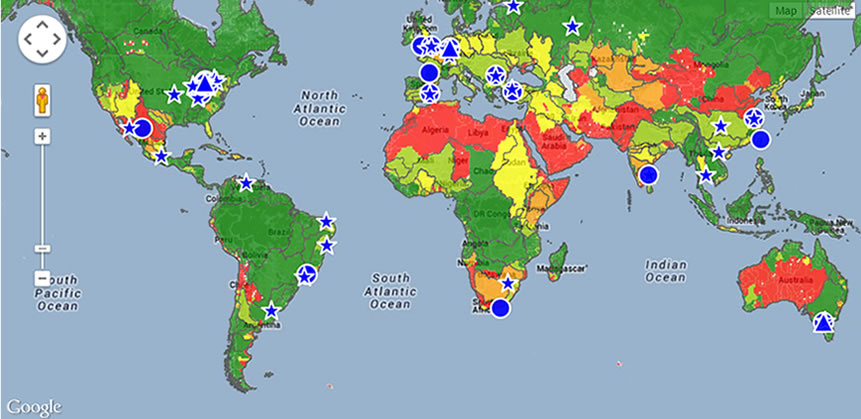Sustainability Report 2013/14
Water
Operating in Water-Scarce Regions
Ford has been growing in many areas of the world where water access and availability are concerns. We have identified which of our operations are located in water-scarce regions using watershed-level data from the World Business Council for Sustainable Development’s (WBCSD) Global Water Tool. Previously, we used country-level data in the Global Water Tool to analyze our operations. However, water availability is a local issue, and country-level data that averages the water availability across multiple watersheds may mask important regional variations. Therefore, we conducted the latest analysis using more detailed watershed-level data. According to our analysis, about 24 percent of our operations are located in regions that are considered to be at risk.
Our facilities in Mexico are located in water-scarce regions; our manufacturing facility in Cuautitlán, Mexico, for example, is already subject to water-withdrawal limitations. Several of our facilities in our Asia Pacific Africa region are in areas that are currently water scarce, or are expected to be in the near future.
Ford also used the Global Water Tool to evaluate which of our operations are projected to be in water-scarce regions by 2025. According to the analysis, approximately 25 percent of our operations are projected to be in such regions. The WBCSD’s free tool enables companies to map their facilities and assess several water-related risks. For more information on the tool and how it works, see the WBCSD website.
Ford Operations: 2025 Projected Annual Renewable Water Supply per Person

Source: World Business Council for Sustainable Development’s Global Water Tool (GWT) v2 uses several datasets. Annual renewable water supply per person projections for 2025 are obtained from the Pilot Analysis of Global Ecosystems: Freshwater Systems. Washington DC: WRI produced by C. Revenga, J. Brunner, N. Henninger, K. Kassem and R. Payne (2000).
© 2014 Ford Motor Company
